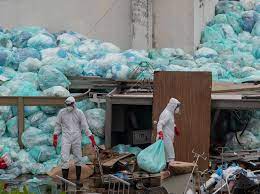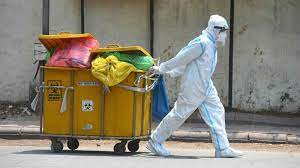The management of medical wastes is a critical aspect of healthcare operations, as it ensures the protection of public health and the environment. Medical waste encompasses a wide range of materials generated from healthcare facilities, including hospitals, clinics, laboratories, and research centers.
Due to the potential risks associated with these waste streams, it is imperative to implement effective management practices that prioritize safety, regulatory compliance, and environmental sustainability. This article will outline the significance of managing medical waste and the benefits it brings to both human health and the environment.
Proper management of medical wastes significantly reduces the risk of infection transmission. Healthcare facilities generate a variety of waste materials, such as used syringes, contaminated dressings, and specimens. If not handled appropriately, these items can expose healthcare workers, patients, and the community to infectious diseases.
By implementing strict waste segregation, safe handling procedures, and adequate disposal methods, the chances of disease transmission are minimized, thereby safeguarding public health.
Healthcare workers are at the forefront of managing medical waste and are vulnerable to potential hazards if proper precautions are not taken. Sharps injuries, exposure to harmful chemicals, and contact with infectious materials are among the risks faced by healthcare personnel.
Effective waste management practices, including the use of puncture-resistant containers, the provision of personal protective equipment (PPE), and comprehensive training programs, ensure the safety of healthcare workers, reducing the incidence of occupational injuries and illnesses.
Regulatory bodies establish guidelines and regulations to govern the proper management of medical waste. Compliance with these standards is not only a legal obligation but also essential for maintaining the reputation and credibility of healthcare facilities. Failing to adhere to regulatory requirements can lead to penalties, legal consequences, and potential harm to the environment and public health.
By implementing robust waste management systems, healthcare facilities can demonstrate their commitment to following ethical and legal guidelines, fostering trust among patients and the community.
Improper disposal of medical waste poses significant risks to the environment. Biomedical waste, if not treated or disposed of correctly, can contaminate soil, water bodies, and the air, leading to long-term ecological damage. Toxic chemicals, infectious agents, and pharmaceutical residues present in medical waste can find their way into ecosystems, disrupting biodiversity and harming both flora and fauna.
By employing proper waste segregation, treatment, and disposal methods, healthcare facilities can minimize their ecological footprint and contribute to environmental sustainability.
Managing medical waste involves educating and engaging the public in waste reduction and safe disposal practices. Raising awareness among the general population about the potential risks associated with medical waste encourages responsible behavior and fosters a sense of collective responsibility.
Public participation in waste management initiatives, such as community recycling programs and safe disposal campaigns, strengthens the overall effectiveness of medical waste management efforts.
Efficient management of medical wastes is a vital component of healthcare operations, promoting public health, protecting the environment, and ensuring regulatory compliance. By implementing comprehensive waste management practices, healthcare facilities can mitigate the risks associated with medical wastes, safeguard the well-being of healthcare workers and the general public, and contribute to a sustainable future.
Continued efforts in research, technological advancements, and public awareness are essential in addressing the challenges posed by medical wastes and maintaining a safe and healthy environment for all.
Ways To Manage Medical Wastes Properly

Proper management of medical wastes is essential to prevent the spread of infections, protect public health, and minimize environmental impact. Here are some ways to manage medical waste properly:
1. Segregation
Separate different types of medical wastes at the source to facilitate appropriate handling and disposal. Common categories include sharps, infectious waste, pathological waste, pharmaceutical waste, and chemical waste.
2. Training and Awareness
Ensure that healthcare personnel receive proper training on the segregation, handling, and disposal of medical waste. Promote awareness among staff members about the importance of following waste management protocols.
3. Use of Color-Coded Containers
Provide color-coded containers or bags for different types of medical waste to aid in segregation. For example, red bags for infectious waste, yellow containers for sharps, and blue containers for pharmaceutical waste.
4. Safe Storage
Store medical wastes in secure, labeled, and leak-proof containers to prevent contamination and accidental exposure. Use appropriate storage facilities with restricted access to authorized personnel only.
5. Transportation
Follow specific regulations for transporting medical wastes, including using designated vehicles equipped with leak-proof containers and ensuring proper labeling and documentation. Compliance with transportation regulations is crucial to prevent spills or accidents during transit.
Read Also: Unveiling the Bacterial Pollution Consequences
6. Treatment and Disposal
Medical wastes should be treated and disposed of through appropriate methods, such as incineration, autoclaving, or chemical treatment. Ensure that treatment facilities are licensed and follow environmental regulations. Avoid open burning of medical waste, as it can release toxic pollutants.
7. Recycling and Reuse
Whenever possible, explore opportunities for recycling or reusing certain types of medical wastes, such as sterilizing and repurposing certain medical devices. However, strict guidelines and quality control should be followed to ensure safety.
8. Documentation and Record-Keeping
Maintain accurate records of medical wastes management activities, including quantities, types, treatment methods, and disposal locations. Documentation is vital for regulatory compliance and auditing purposes.
9. Regular Monitoring and Auditing
Implement a system to monitor and audit medical waste management processes regularly. This helps identify any deficiencies, allows for continuous improvement, and ensures compliance with regulations.
10. Compliance with Regulations
Stay updated with local, national, and international regulations regarding medical wastes management. Compliance is crucial to ensure the safety of healthcare workers, patients, and the environment.
Read Also: Liquid Wastes Complete Management Guide
11. Community Education
Conduct educational programs and campaigns to raise awareness among the community about the proper management of medical wastes. This can include disseminating information through brochures, workshops, and public service announcements to promote responsible disposal practices.
12. Encourage Waste Reduction
Implement waste reduction strategies within healthcare facilities to minimize the amount of medical waste generated. This can involve practices such as inventory management, optimizing packaging, and promoting the use of digital records instead of paper-based systems.
13. Personal Protective Equipment (PPE) Disposal
Establish specific protocols for the disposal of used PPE, such as masks, gloves, and gowns. Encourage proper disposal practices among healthcare workers and provide designated containers for PPE waste in easily accessible areas.
14. Collaboration with Waste Management Experts
Foster collaboration with waste management experts, environmental agencies, and local authorities to ensure compliance with regulations and seek guidance on best practices. They can provide valuable insights into waste management technologies, disposal options, and emerging trends.
15. Continuous Improvement
Regularly assess and evaluate medical waste management processes to identify areas for improvement. This can include conducting waste audits, seeking feedback from staff members, and implementing new strategies or technologies to enhance efficiency and safety.
16. Monitoring Infectious Waste Streams
Implement systems to track the generation, collection, and disposal of infectious waste to identify any patterns or trends. This data can help identify areas where improvements can be made, such as reducing unnecessary waste generation or optimizing collection schedules.
17. Consideration of Environmental Impact
Promote environmentally friendly practices within healthcare facilities by implementing waste management methods that minimize environmental impact. This can include exploring alternative energy sources, reducing greenhouse gas emissions, and promoting recycling initiatives.
18. Emergency Preparedness
Develop contingency plans and emergency response protocols to handle unexpected situations, such as disease outbreaks or natural disasters. These plans should include provisions for managing increased medical waste volumes safely and efficiently.
19. Encourage Research and Innovation
Support research and development efforts to explore new technologies and approaches for medical waste management. Encouraging innovation can lead to more efficient and sustainable methods of handling and disposing of medical waste.
20. Compliance Monitoring and Enforcement
Implement mechanisms to monitor and enforce compliance with waste management regulations within healthcare facilities. This can involve conducting routine inspections, imposing penalties for non-compliance, and providing guidance and support to facilities that require assistance.
Remember to consult local regulations and guidelines specific to your region or country, as they may have additional requirements for managing medical waste.
By adopting these practices, healthcare facilities can effectively manage medical waste, reduce the risk of contamination and infection, and contribute to the overall health and well-being of both their staff and the community.
Read Also: How to Start a Business in Colorado

